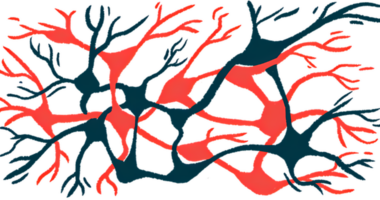Lab-made stem cell model will offer new way to study Parkinson’s
Researchers plan to use model to study disease mechanisms, test therapies

Researchers have developed a way to generate a family of nerve cells implicated in Parkinson’s disease in the lab using human stem cells, according to newly published research.
These cells, found in a brain region called the locus coeruleus (LC), produce a signaling chemical called norepinephrine, or NE. While these cells are known to degenerate early in Parkinson’s and other neurological diseases, it is not known exactly why.
The scientists discovered a protein important for the cells’ growth, which enabled them to be generated in the lab. The team now plans to use the stem cell model to more closely study neurodegenerative disease mechanisms and to test possible therapeutic candidates.
Importantly, according to Yunlong Tao, PhD, the study’s first author, “we have some new understanding about locus coeruleus development.”
“That’s the major finding in this paper, and based on that finding, we are able to generate locus coeruleus norepinephrine neurons,” Tao said in a press release from the University of Wisconsin (UW)-Madison, where the study was conducted. Tao, an investigator at Nanjing University, in China, was working as a UW-Madison researcher at the time of the study.
Titled “Generation of locus coeruleus norepinephrine neurons from human pluripotent stem cells,” the study was published in Nature Biotechnology.
Locus coeruleus-norepinephrine (LC-NE) cells implicated in Parkinson’s
A tiny cluster of nerve cells (neurons) deep in the brain, the locus coeruleus plays a critical role in brain function. The cells there are the main producers of norepinephrine, a signaling chemical best known for its role in mediating so-called fight or flight reactions that occur during stressful situations.
Nerve cells originating in the locus coeruleus extend throughout the brain and spinal cord via an extensive branching system, where they release norepinephrine to regulate heartbeat, blood pressure, arousal, memory, and attention.
“The norepinephrine neurons in the locus coeruleus are essential for our life,” said Su-Chun Zhang, MD, PhD, a neuroscience and neurology professor at UW-Madison and the study’s senior author.
“We call it the life center,” Zhang said, adding that “without these nerve cells, we would probably be extinct from Earth.”
Dysfunction of this brain region, therefore, can have severe consequences for brain health. Indeed, locus coeruleus-norepinephrine (LC-NE) cells have been implicated in a range of neurodegenerative diseases, including Parkinson’s and Alzheimer’s disease.
In Parkinson’s, the locus coeruleus is one of the first brain regions to start degenerating. This has been associated with a range of the disease’s nonmotor symptoms.
“People have noticed this for a long time, but they don’t know what the function of the locus coeruleus is in this process,” Tao said, adding that’s also “partly because we don’t have a good model to mimic the human LC-NE neurons.”
Stem cells, which have the capacity to become virtually any other cell type under the right conditions, give rise to basically all mature cells in the body. Scientists can leverage this to generate nerve cells of human origin in the lab. When treated with specific chemicals, stem cells can be prompted to turn into almost any cell type the researchers want to study.
However, this has proven difficult in the past with LC-NE neurons, and several attempts had failed.
New stem cell model will be used for range of experiments
In their new study, the team identified that a growth factor protein called ACTIVIN-A is necessary for regulating the development of these cells. Without it, the gene activity needed for precursor cells to become LC-NE neurons can’t occur.
By adding in ACTIVIN-A during the process, the scientists could thus develop LC-NE neurons from stem cells. The cells they produced had the expected structural and functional characteristics of LC-NE neurons, including the release of NE and other functions related to their role in breathing and heart rate.
Ultimately, the researchers believe the LC-NE cells can be used to further study how and why these cells seem to die off so early in diseases like Parkinson’s.
“If this is somewhat causative, then we could potentially do something to prevent or delay the neurodegeneration process,” Zhang said.
The availability of functional human LC-NE neurons enables investigation of their roles in psychiatric and neurodegenerative diseases and provides a tool for therapeutics development.
Stem cell-derived neurons will have the genetic and cellular characteristics of the person from whom the stem cells were taken. As such, scientists could generate LC-NE neurons from Parkinson’s patients to learn more about how the cells behave and how they respond to therapeutic candidates.
“The availability of functional human LC-NE neurons enables investigation of their roles in psychiatric and neurodegenerative diseases and provides a tool for therapeutics development,” the researchers wrote.
The team also developed a line of the cells with a fluorescent sensor for detecting norepinephrine levels, which the scientists believe, “may be useful to find novel drugs that regulate NE [norepinephrine] release and/or uptake.”
As a next step, the scientists plan to look more closely at how ACTIVIN-A regulates LC-NE cell development. In addition, the team will use the stem cell model for experiments aimed at modeling human disease and testing therapeutics.
“The application of these cells is quite broad in its significance,” Zhang noted.








